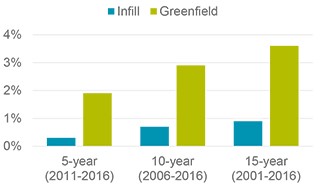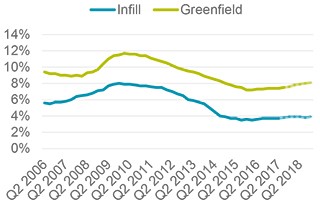Key TakeawaySite selection criteria for logistics and distribution occupiers evolves as new customers are procured, service level requirements change, new products are launched, and costs shift. The optimal location provides the best balance of service and cost. Critical to competitive positioning is having the right items at the right place at the right time, and increasingly that time is right now. Throughout the U.S., the tightest conditions can be found in submarkets proximate to population centers with the highest barriers to supply. Retailers, both online and traditional, and third-party logistics firms are working to get closer to the consumer. This has been a boon to owner and developers of entitled land adjacent to urban areas. For many retailers, future sales – and profits – will be dependent on how quickly and consistently goods can be delivered to customers in major metro areas. Developing robust, flexible, highly responsive final mile networks is essential. As a result, upward pressure on infill land pricing – and the premium placed on assembled, entitled land ready for development – will continue to increase. |
|||||||||||
Want to See the Data? Read OnSmaller Warehouse, Bigger Price and Performance
|
|||||||||||
Investor InterestIncreasingly, investors are taking note of warehouse properties in infill locations. Part of the attraction to investing in such product is its steady occupancy and rent growth, and its stronger rent growth is partially attributable to the cost and complexity of developing an infill site. The vast majority of warehouse construction over the past decade has been on greenfield sites located at the periphery of metropolitan areas in close proximity to transportation infrastructure that allows for efficient regional and national fulfillment. With land costs rising, especially in “final mile” locations, multi-tenanted warehouse values on infill sites are 22% higher than the broader warehouse market and pricing continues to increase. Strong investor demand has pushed up prices, which stood at $82 per square foot at year-end 2016, a 5.1% increase from the previous year and 31% above the previous peak. Given the transformation underway in the industrial sector – where development of robust and responsive final mile networks are critical – values and investor interest in infill warehouse product will continue to rise. |
|||||||||||
|
|||||||||||
Categories:
Tags:




Comments are closed